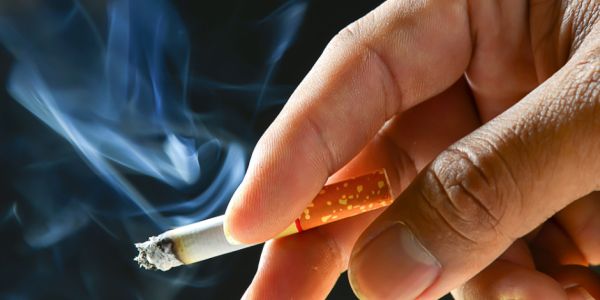World No Tobacco Day highlights the devastating effects smoking can have on people with diabetes

Cutting out tobacco is incredibly important. The NHS is overburdened by tobacco related illnesses, despite the slight decline in the number of smokers. 37% of men and 27% of women die from conditions that can be caused by smoking. This includes heart and circulatory diseases, the theme for this year’s World No Tobacco Day.
Smoking is very bad for the heart and blood. So, of course, are high blood glucose levels. The two things together can be catastrophic. It is so important that people with diabetes don’t smoke, because the danger of cardiovascular disease and other complications are very real and very scary. Besides, if you are managing your blood sugar levels well, are eating healthily and moving more to keep the condition under control, why jeopardise all that good work by smoking?
It is not just people with diabetes that need to stop smoking. In an ideal world nobody would want to smoke at all. However, giving up is easier said than done. The task can seem insurmountable when you have a 20-a-day habit, and the process can cause a seemingly overwhelming amount of anxiety. But, once you’re past the first few days, I can promise it does gradually get easier. People with diabetes are usually very disciplined with what they eat, and the same premise applies to smoking.
When I was planning on moving in with my girlfriend (now wife) for the first time I was explicitly told my tobacco habit was not allowed to come with me. Smoking had become a habitual part of my day. The first cigarette was at 11am as a break from work, the last one was before brushing my teeth at bedtime, with another dozen or so in between. There were structured breaks built in to my day to feed my nicotine cravings.
Bar a couple of early blips, I have kept my promise. It’s now almost three years since I’ve had a cigarette, and I don’t miss it. The smell of smoke makes me feel genuinely ill now, and though I’m still fond of the occasional puff on my E-cigarette, I am very nearly free of my tobacco and nicotine addiction.
Everyone’s experience is different, but I’ll share with you a few things that assisted me. Changing up my routine was the biggest help. This was easy for me, as I had just moved house. I simply tailored my day, which was different anyway, to no longer include smoking. But there are little changes you can make. Set your alarm slightly later and don’t factor the cigarette into your morning. Walk a slightly different way to work without a cigarette. Grab a coffee instead of going for a cigarette break. Walk a different way to the sandwich shop at lunch. These may seem insignificant, but there is a reason smoking is referred to as a habit. By making small changes to your day you may be able to cut out the periods you have built in for smoking.
https://quitnow.smokefree.nhs.uk
There is also free help you can get from the NHS. Attempts to quit with the help of the NHS have almost halved in the past 5 years. The resources are there, and remember that healthcare professionals are as keen for you to quit as you are. There are also several products widely available such as nicotine gum, patches and inhalers. E-cigarettes can also help, though be aware they are not yet recommended by the NHS, so try recommended methods first.
The risk smoking has to people with diabetes, and the world as a whole, can’t be ignored. This World No Tobacco Day, pledge to make that morning cigarette your last. It will be difficult and stressful, but it will be 100% worth it in the long run.
Author Jonathan Hatch
Acknowledgement Diabetes UK
